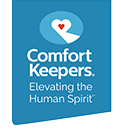Every 13 seconds, an older adult is treated in the emergency room for a fall; every 20 minutes, an older adult dies from a fall.
Senior Falls and Injuries
About one third of the senior population over the age of 65 falls each year, but since many incidents go unreported by seniors and unrecognized by family members or caregivers – this estimate is most likely quite low.
Falls are the leading cause of death from injury among people 65 and older, and the risk of falls increases proportionately with age. At
80 years, over half of seniors fall annually.
Here are some more surprising facts and statistics related to seniors and falling:
- 87 percent of all fractures in the elderly are due to falls. Two-thirds of those who fall will do so again within six months.
- When an older person falls, his or her hospital stays are almost twice as long as those of older patients who are admitted for any other reason.
- Among people aged 65 to 69, one out of every 200 falls results in a hip fracture. That number increases to one out of every 10 for those aged 85 and older.
- One-fourth of seniors who fracture a hip from a fall will die within six months of the injury.
- Many falls do not result in injuries, yet 47 percent of non-injured seniors who fall cannot get up without assistance.
- For seniors who fall and are unable to get up on their own, the period of time spent immobile often affects their health outcomes. Muscle cell breakdown starts to occur within 30-60 minutes of compression due to falling. Dehydration, pressure sores, hypothermia, and pneumonia are other complications that may result.
Falls, with or without injury, also carry a heavy quality of life impact. A growing number of older adults fear falling and, as a result, limit their activities and social engagements. This can result in further physical decline, depression, social isolation, and feelings of helplessness. The most profound effect of falling is the loss of independent living.
Senior Fall Prevention Safety: 20 Things You Can Do to Help
- Remove obstacles inside and outside of the house that could cause tripping.
- Install handrails and lights on staircases, with light switches at the top and bottom of the stairs. You may even consider glow-in-the-dark or lighted switches.
- Add non-slip treads for bare wooden steps.
- Install shower and tub grab bars in the bathroom, around the toilet and the tub.
- Place non-slip mats on the shower floor and bathtub.
- Secure loose rugs with double-faced tape, tacks, or slip-resistant backing.
- Repair loose, wooden floorboards and carpeting.
- Store clothing, dishes, food and other necessities within easy reach.
- Immediately clean spilled liquids, grease, or food.
- Paint doorsills with a different, highlighting color to avoid tripping.
- Make home lighting brighter, but prevent glare. Place night lights in the bedroom, bathroom and hallways. Place a lamp within easy reach of the bed for middle-of-the-night needs.
- Store working flashlights in easy-to-find places in case of power outages.
- Have vision checked often and regularly.
- Ask the doctor to review medications regularly for side effects and interactions.
- If he or she is able, have the senior start exercising on a regular basis ─ tai chi or yoga can increase flexibility and strengthen muscles and joints.
- If the senior can’t stand comfortably, have him or her exercise in a chair.
- Have the senior wear sensible shoes. They should be properly fitting, sturdy shoes with non-skid soles.
- Note any health conditions such as dizziness, joint pain, numbness, or shortness of breath when walking. Tell the doctor, should any of these occur. He or she may evaluate muscle strength, balance and walking style (gait) as well.
- Have the senior use assistive devices, if needed. The doctor might recommend using a cane or walker to keep him or her steady.
- Consider a PERS (Personal Emergency Response System) unit that will alert others when help is needed.
If necessary, ask the doctor for a referral to an occupational therapist. He or she can help brainstorm other fall-prevention strategies.
Comfort Keepers® can help. Getting help after an immobilizing fall improves the chance of survival by 80 percent and increases the likelihood of a return to independent living. Of course, it is best to prevent falls in the first place. Comfort Keepers can perform home safety assessments, and offer practical solutions and products to keep seniors safe. Call your local office today.
References:
- National Council on Aging (NCOA). “Falls Prevention Facts.” Web. 2015.
- Mayo Clinic. “Fall Prevention: Simple Tips to Prevent Falls”. Web. 2014.
- Learn Not to Fall. “How Often Falls Occur”. Web. 2012.

